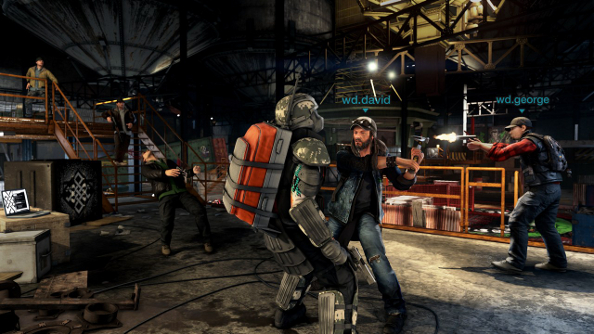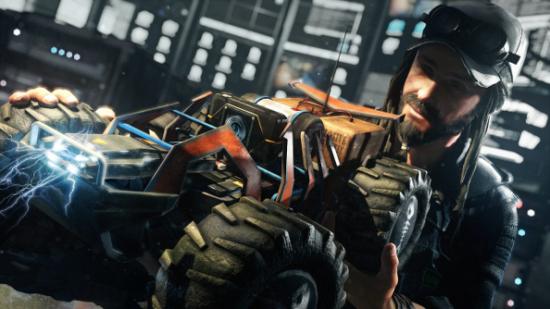Watch_Dogs was divisive. Controversial. In all honesty, despite the stick it received, I really liked and admired its ambition. I liked its open world – I liked the paranoia it generated by having other hackers invade and track you. I loved its sense of prurient power: listening in on phone conversation, picking and choosing who to hack based on their background.
But it had problems. The lead character, Aiden, was a fence-post in a trench-coat. The mid-game Enforcer bosses ruined the stealth combat. And it just didn’t feel like it was taking advantage of the tools it had created.
I’ve played about half of the game’s forthcoming DLC, Bad Blood. It feels better. Aiden is barely mentioned – you play as the far more interesting artist-demolition’s expert T-Bone. He is gruff and interesting, wears a bit too much denim, and looks like he needs a good wash. He has a new toy: a remote controlled car that can flit through small tunnels and ducts.
But most importantly, in Bad Blood Ubi’s game designers have started to figure out how to expand on Watch_Dog’s core conceit: hacking.
Here’s the problem. In Watch_Dogs, when you’re installed in someone’s webcam, security cam, or lap-cam, there’s not actually that much you can do to manipulate the environment around you. You can attract guards, maybe make a few things explode, but that’s really it. The world doesn’t feel rich enough to offer options. You can’t combine hacking one thing, with exploiting another. Bad Blood changes that.
One example: in Bad Blood, you can open and close doors behind enemies. So – you can attract a baddie into an office and then lock the door behind them, trapping them inside. Another: it knows how cool the Watch_Dogs world could be. In one early mission, you discover that your escape route is directly next to the Chicago tram line. Under the view of snipers, you simply step out, pull a train to a standstill, get in, and leave. Another: a mission sees you attempting to ward off enemies in a crowd, scanning each to see if they’re potential crims before they commit a crime. Another has you defending a hideout using a series of remote controlled gun turrets.
There are other slight improvements. The line puzzles that you solved to hack important machines in the original game are now no longer a separate screen – they’re projected onto the walls of the room you’re in. I didn’t see a single enforcer enemy during my playthrough, although I only got to play about half of the DLC.

But I did get to play Bad Blood’s co-op mode. If you can find a friend, you’ll be able to play a series of objectives in the areas single player missions took place in. They’re usually filled with baddies, and you’re given a simple directive: hack, kill, or subdue this person. But you’re also given a sub objective: without being seen, without killing anyone, without hurting anyone, without hacking anything…
These objectives are combined procedurally, reset every day, and include leaderboards. They’re simple, and, with a friend who knows what he or she is doing, probably a bit too easy. The reality is that players are way, way more powerful than any of the enemies in Watch_Dogs, and putting two of them into any space gives them an absurd advantage. Combine the hacks, the situational awareness received from marking targets, the weapons, the sniping, silent instant takedowns and everything else, and the game just falls over for you. It’s only the sub-objectives create any sense of challenge: that force you to play by some rule, rather than just murderising everything and everyone.
I think I liked Watch_Dogs more than most. I liked what I played of Bad Blood more. It generally feels like a more diverse game, a game more comfortable with what it can achieve. Not only does Bad Blood improve on the base game, it points to where Watch_Dogs 2 can take the series: more diversity, more power, more character.
